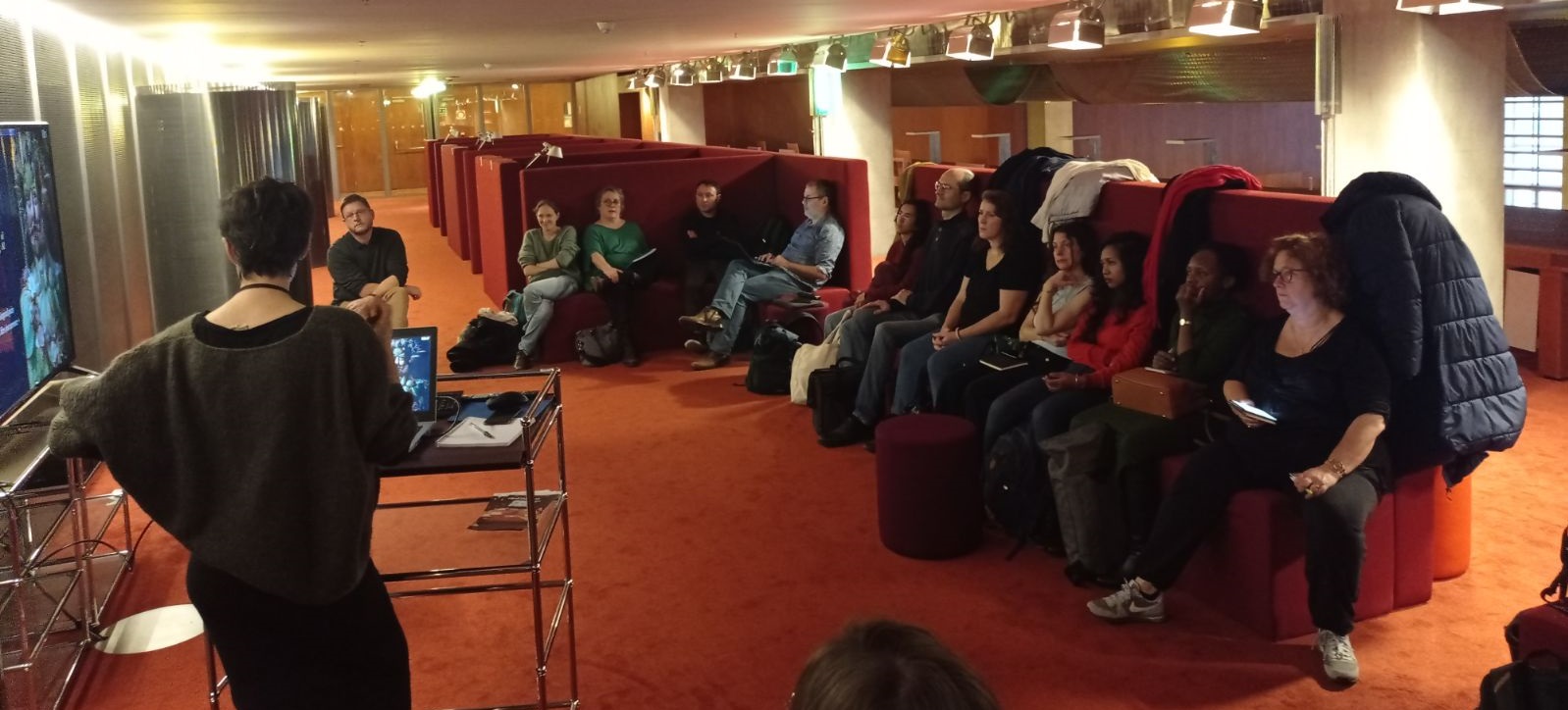Séminaire Terrains, Analyse et COmparaison des Langues (TACOL)
La prochaine séance de notre séminaire TACOL aura lieu le lundi 08 juillet 2024 à 14h30, sur place (salle de réunion 311, Campus CNRS de Villejuif) et sur Zoom.
Nous aurons le plaisir de recevoir et d’écouter une présentation en anglais de Valentina Alfarano (post-doctorante à l’Université d’Oslo).
Titre de la présentation :
“Valency morphology and verb classes in Santa Cruz language: a view from Proto-Oceanic”
Résumé :
Reefs-Santa Cruz (RSC) languages, which belong to a primary subgroup of the Oceanic family (Ross & Næss 2007), are spoken in Temotu province, the easternmost province of Solomon Islands. They include Äiwoo, spoken in the Reef Islands, and the three languages of Santa Cruz (SC) Island, namely, Natügu, Nalögo and Engdewu. In the Oceanic literature, RSC languages have always been regarded as “aberrant” (Wurm 1969). Their origins have been debated for more than thirty years until 2007, when they were finally recognised as Oceanic (Ross & Næss 2007). In terms of valency-changing devices and clausal structure, RSC languages as a group show some unusual patterns. On the one hand, Äiwoo is analysed as having a symmetrical voice system with three basic voices, that is, actor voice, undergoer voice, and circumstantial voice (Næss 2021). Symmetrical voice systems are thought to have been lost in the transition from Proto-Malayo-Polynesian to POc (Lynch et al. 2002: 60–62). On the other hand, SC languages display more canonical Oceanic transitivity-based systems, with some valency-changing devices of POc origin.
While some studies have been conducted on the functions and origins of the voice markers in Äiwoo (Næss, 2013, 2021), SC languages still lack a detailed comparative-historical analysis of their valency morphology. The aim of this talk is to analyze the functions and distribution of two SC valency-increasing devices, (v)a- and -ti, reflexes of POc *pa[ka]- and *-i, as well as showing how verb classes evolved over time. I will show that the SC causative (v)a- retained all the causative functions of *pa[ka]-, as well as a non-causative one, namely, marking verb modifiers (Evans 2003). However, unlike *pa[ka]-, (v)a- can also occur with transitive verbs, even though this use has only one attestation in Nalögo. The SC applicative -ti is the affix showing most formal and functional changes in the transition from POc to SC. It retained most functions of POc *-i, but many of them are decaying or decayed. Along with the uses inherited from POc, some innovative functions developed over time. Overall, it seems that the role of POc *-i in deriving transitive verbs is decaying in SC. This phenomenon might have contributed to the emergence of a new class of transitive verbs detransitivized by the prefix (v)ö-, a marker with middle/reciprocal semantics and a possible reflex of POc *paRi- (Lichtenberk 2000, Bril 2005). In the last part of the seminar, time permitting, I will compare the functions of SC valency morphology with the voice and valency markers attested in Äiwoo.
Références
Bril, Isabelle. 2005. Semantic and functional diversification of reciprocal and middle
prefixes in New Caledonian and other Austronesian languages. Linguistic Typology 9:25–76.
Evans, Bethwyn. 2003. A study of valency-changing devices in Proto Oceanic. Canberra: Pacific Linguistics.
Lichtenberk, Frantisek. 2000. Reciprocals without reflexives. In Reciprocals: Forms and functions, ed. by Zygmunt Frajzyngier and Tracy S. Curl, 31–62. Amsterdam/Philadelphia: John Benjamins
Lynch, John & Ross, Malcolm & Crowley, Terry. 2002. The Oceanic Languages. Richmond: Curzon Press.
Næss, Åshild. 2013. From Austronesian voice to Oceanic Transitivity: Äiwoo as the “Missing Link”. Oceanic Linguistics 52(1): 106–124.
———. 2021. Voice and Valency Morphology in Äiwoo. Oceanic Linguistics 60(1), 160–198.
Ross, Malcolm & Næss, Åshild. 2007. An Oceanic Origin for Äiwoo, the Language of the Reef Islands?. Oceanic Linguistics 46(2): 456–498.
Wurm, Stephen Adolphe. 1969. The linguistic situation in the Reef and Santa Cruz Islands. In Papers in the linguistics of Melanesia 2, Pacific Linguistics A-21, 47–105. Canberra: The Australian National University.
Pour toute demande d’information, merci de contacter Yann Le Moulec


